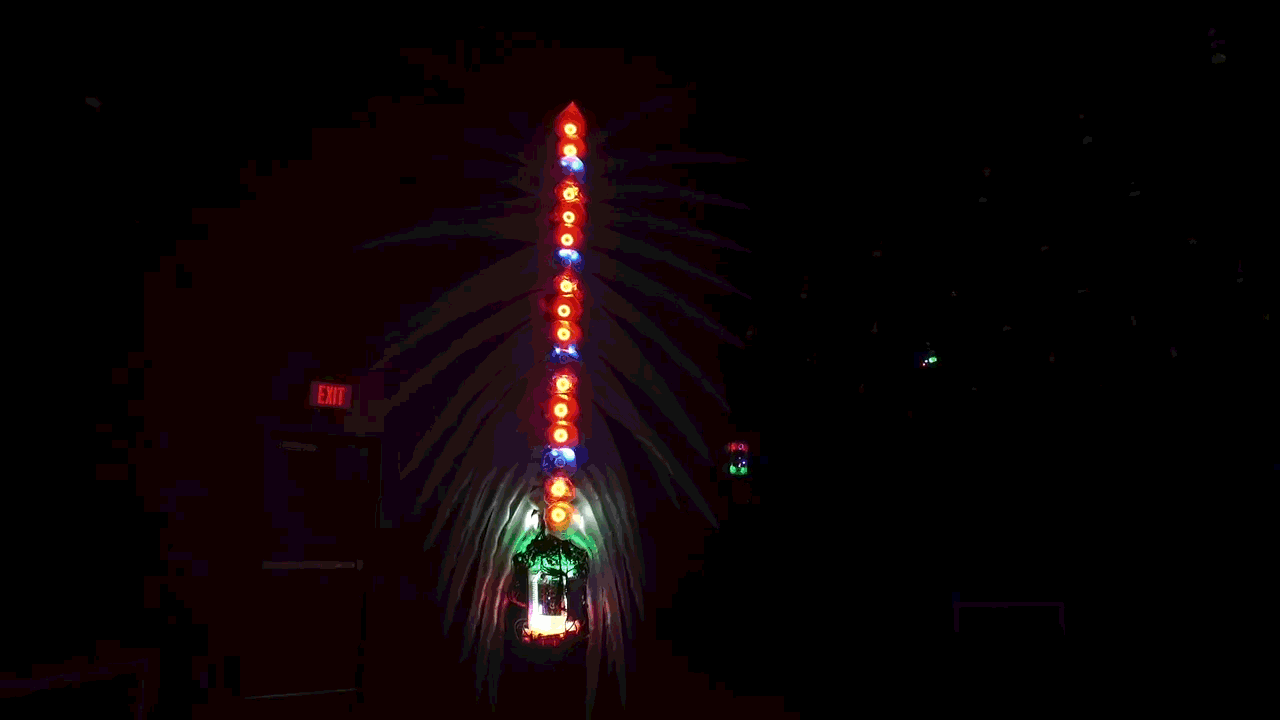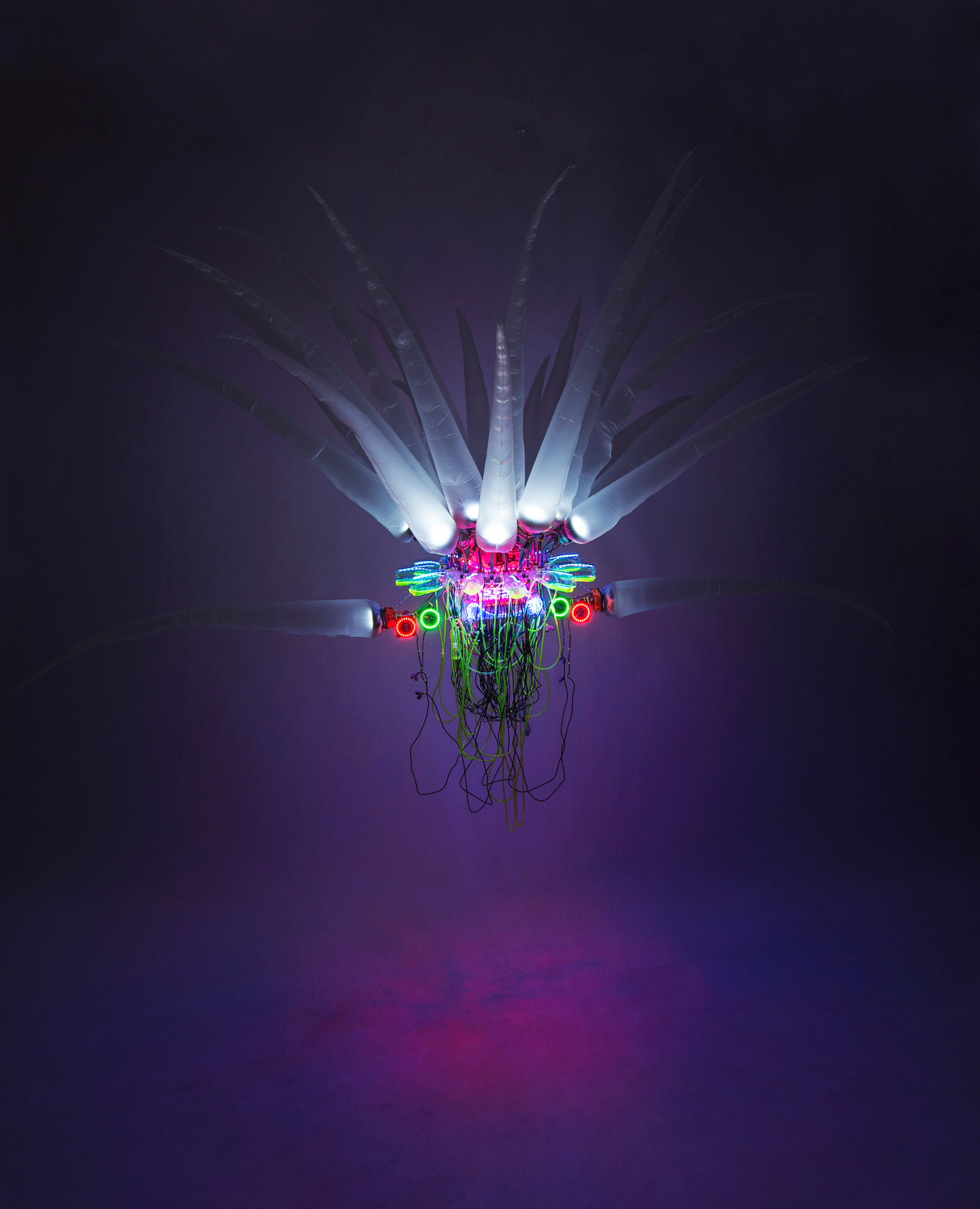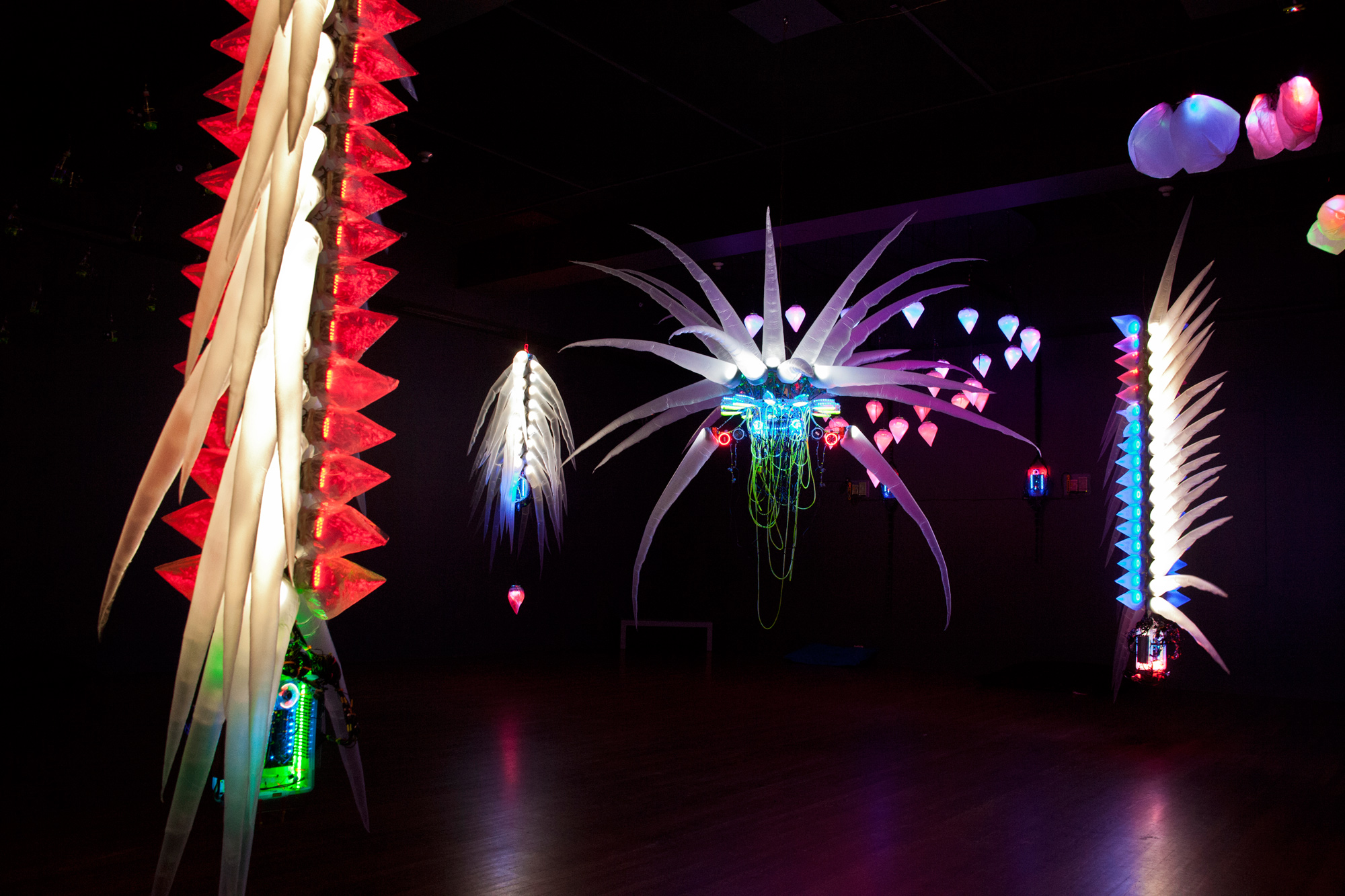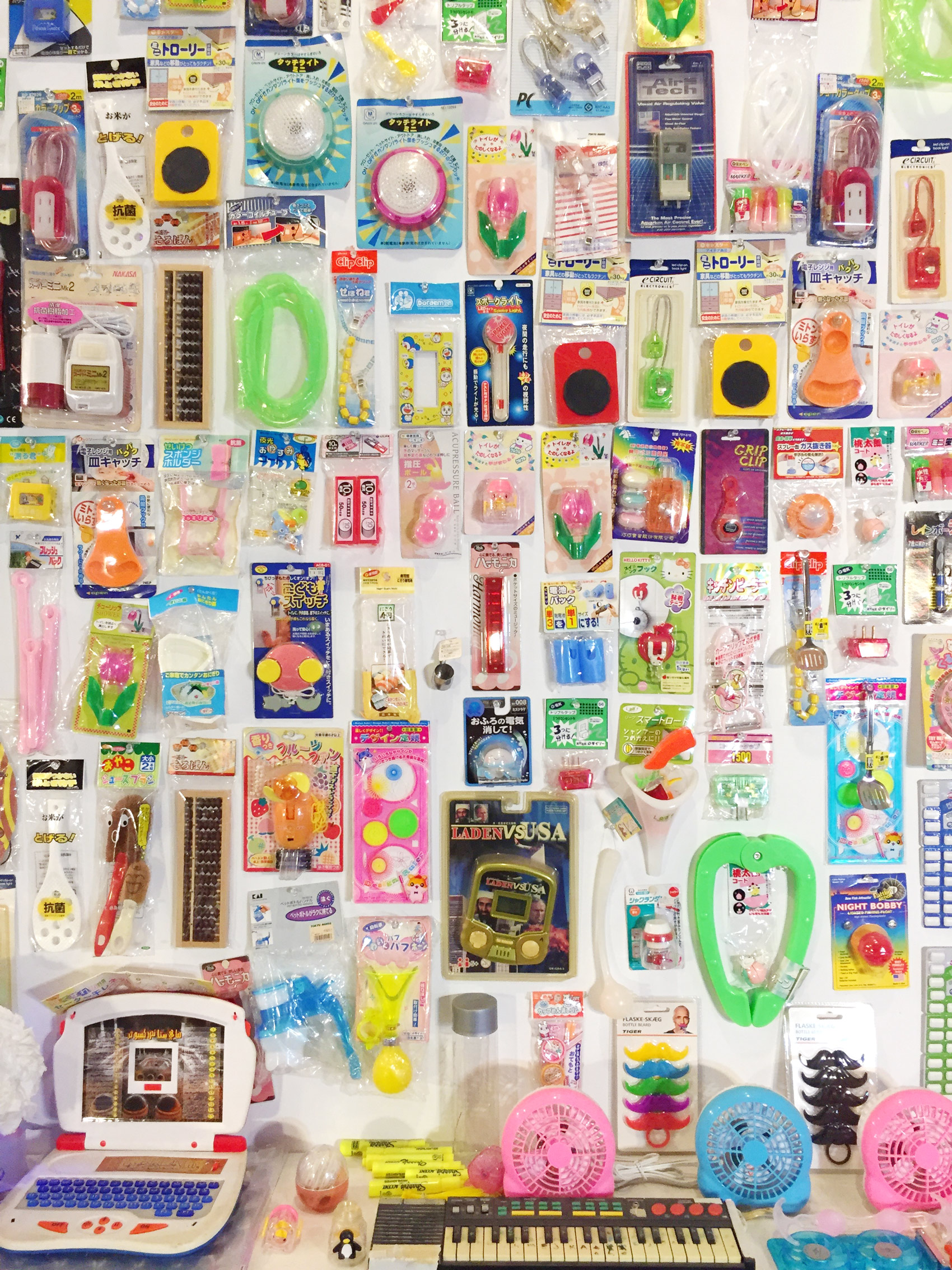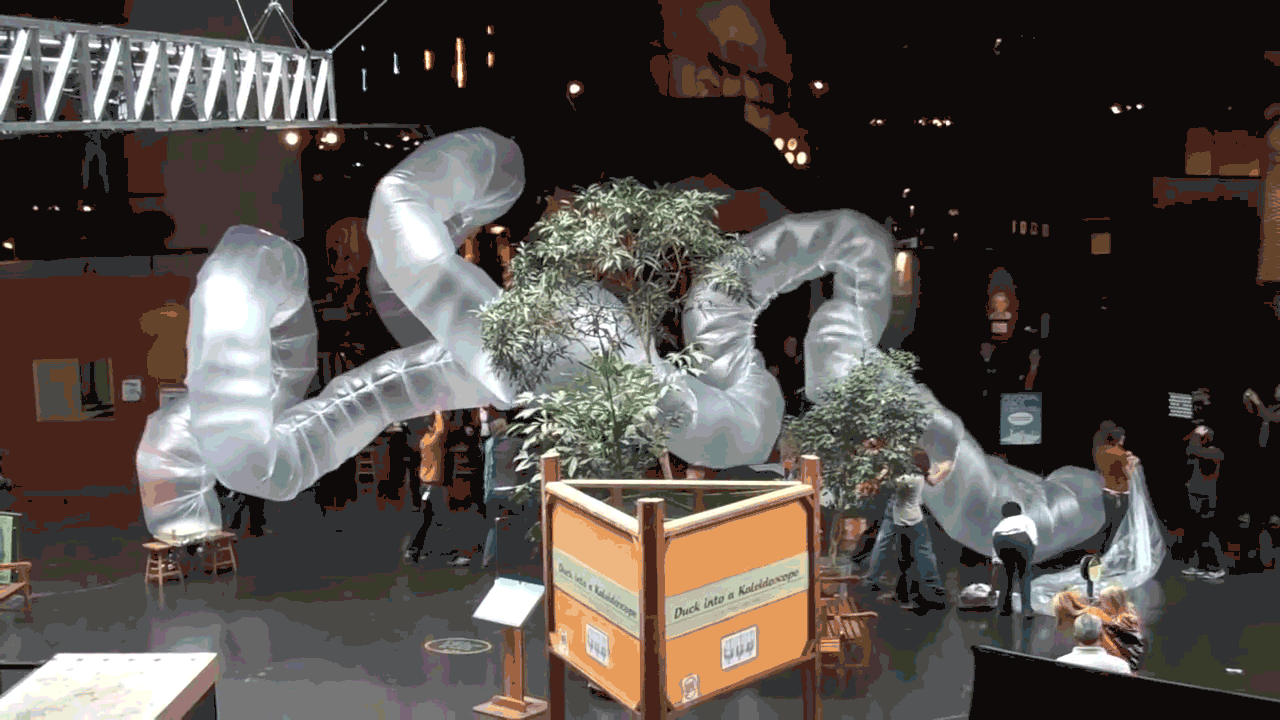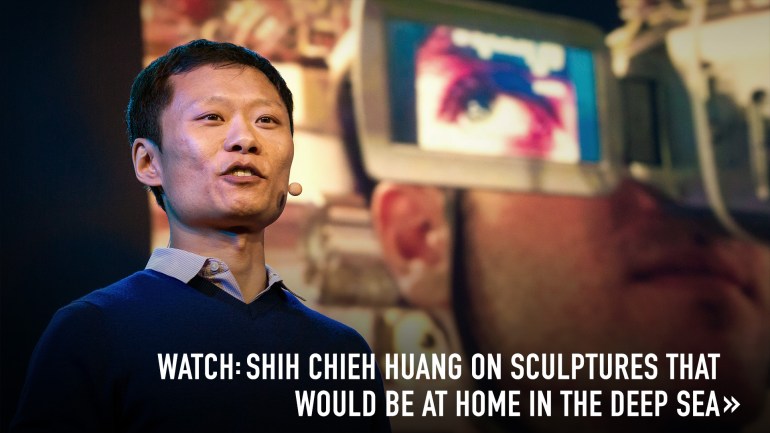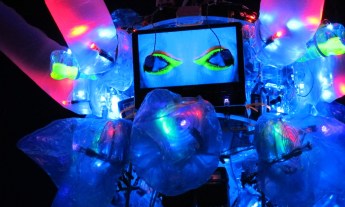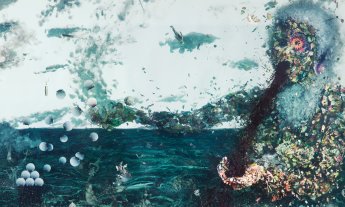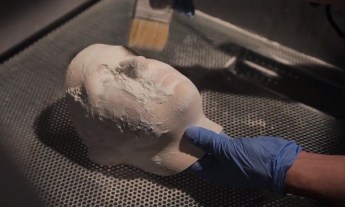Artist Shih Chieh Huang teases out the personality from everyday objects by fusing them together into colorful, clamorous creations.
Where others see trash, mundane household items or random electronics components, New York City–based artist (and TED Fellow) Shih Chieh Huang sees the possibility for glowing, waving, whirring, multi-tentacled creatures (TED Talk: Sculptures that would be at home in the deep sea). His kinetic structures — which look like flora and fauna harvested from an otherworldly ocean — are made out of items like toys, plastic garbage bags, Tupperware, computer fans, rewired circuit boards and fluorescent inks. With his finds from dumpsters, dollar stores, supermarkets and other places, he repurposes, redesigns and reanimates materials into pieces that can inspire us to reexamine our relationship to the objects around us. Reusable Universes — an exuberant installation featuring dozens of pieces, large and small, of his work — is on view at the Worcester Art Museum in Massachusetts through November 12, 2017. He explains the origin and construction of his magical creatures.
You’re walking through a forest and see a pile of trash: do you leave it, pick it up, or make it come to life? Seven years ago, Huang came across garbage that had been discarded in the woods in upstate New York. Instead of getting mad and moving on, he got creative — he snuck back when no one was around and animated the mess by placing fans and colored LEDs in plastic bags among the rubbish. “I set it on a timer so that every morning around 5:30, the fan would turn on, and the bags would start inflating and deflating,” he says. “When people would hike or pass by that section, they’d see garbage coming to life, coming back to get us.”
In Huang’s mind, those breathing bags became a new kind of organism. “I started to think, ‘What happens when they grow up?’” he recalls. Maybe their bodies would get longer, or their bodies would change. It took on a weird sci-fi fantasy theme, and I started to focus on bags. I began collecting them, and I’ve used them in my work ever since.’
But he’s not just about recycling trash into art. He relies on found and acquired objects. “If I buy a bottle of water, drink it, and think about what to do with it afterwards, that’s recycling,” he says. “But for me, it’s often the other way around. I see a bottle, and I like the bottle — so I buy it and then drink the water so I can use that bottle.” For example, one object at the Worcester show consists of a control board built inside a Tupperware cake container. “I was in the supermarket and I came across those circular cake holders. I liked the shape, so I got one. It wasn’t because I baked a cake, put it in the holder, and then thought ‘What to do with this thing?’”
His playful work has its roots in Asia. He grew up in Taiwan — a country famous for its hectic, buzzing, gadget- and tchotchke-filled night markets — near a neighborhood called Electric Town. When he was young, people went there to buy computer parts to cobble together their own low-cost systems. “One shop would sell cooling fans; another shop would sell hard drives,” says Huang. “Now people don’t do it that much, but 15, 20 years ago, there were clear casings for computers so people could customize the aesthetics of the machines’ interiors. I saw one with a little fishbowl inside, lit with a blue light.” In those personalized creations, Huang saw inanimate components evolving into different life forms after they were put together. People often ask him why he uses the detritus of our daily lives, and his reply is that he finds them “comforting and personal.”
He began modifying toys when he moved to the US at the age of 12. “I was struggling with reading and writing because of language issues, so the teachers in a lot of classes let me do extra-credit projects. I’d take apart remote-control cars for physics class, trying to use the motor and the wheels to build atoms and then make them spin around using the remote.” Later, in art school, he worked with standard art supplies, but he kept finding himself drawn to supermarket finds and, later, dollar stores. “Once I discovered dollar stores, everything opened up. You can get multiple things and experiment with them, because you can break stuff. There’s a lot of breaking involved in my process. I get a toy, and I break it — ‘Oh, it doesn’t work,’ and then there’s another one.” He loves seeing what is sold in dollar stores in different countries. He recalls, “At one point I had a grant where I was traveling to Asia just collecting dollar-store stuff, and shipping it home.”
As technology and materials have changed over the years, the aesthetics of Huang’s artwork have, too. Take lighting. “A long time ago, I used halogen lights. But they’re really hot,” he says. “LEDs are cooler, so they’re easier to work with and so much more affordable.” Plastic bottles have changed, he says, in the kinds of plastic used and in their design. “Some bottles are made with indentations down the side, so they’re easier to crush for recycling,” he points out. The “brains” behind his gizmos have also advanced. “A long time ago, my control systems were based on motorized analog switches or Christmas light faders. Because those are just on and off, the repetitiveness was slightly robotic.” Wanting finer control over his creatures, Huang learned how to program. “We built a control board system in 2009, so I had more channels with finer movements.” Then apps came along and changed the game — for the better. “I’ve hooked up an app made for theaters and concerts to the control board,” he says. “This makes visual programming much easier for me, and it’s given my creatures more personality and character in how they move.”
Huang wants to remind people: “Don’t forget the humanity behind all the stuff around us.” He says, “A lot of times when I’m playing around with materials I’ve purchased in stores, I think about the person who spent hours designing it. Someone begins a design concept, and I pick up where they left off, continue on, and make it into something else. Everything is designed — even bottles. I just take them, add to them, and play around.”
The latter goes for his own art, some of which invites hands-on participation. One example is his work “Organic Concept” — it tempts people to touch it, and that alters the work over time. “The piece is made with fragile painters’ plastic, and when people play with it, they tear holes in it, requiring you to retie the tube. The more you tie, the more the shape changes, and it gets smaller and smaller until it’s eventually destroyed. That’s why I call it ‘Organic Concept.’ It’s fluid; it’s not set.” Huang continues to find inspiration in everything around him. When asked about his current projects, he says, “I am intensely fixing things around the house, so I’m getting inspired by toilets, hidden spaces, termites and other insects. I am also working on developing personalities for my creatures.”


